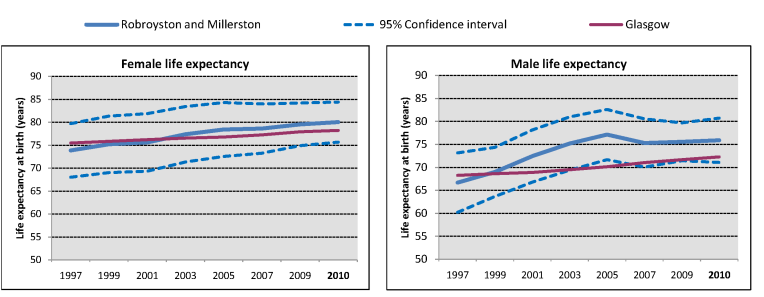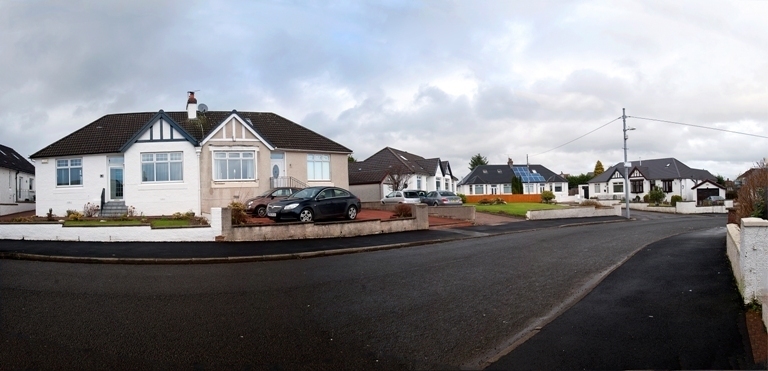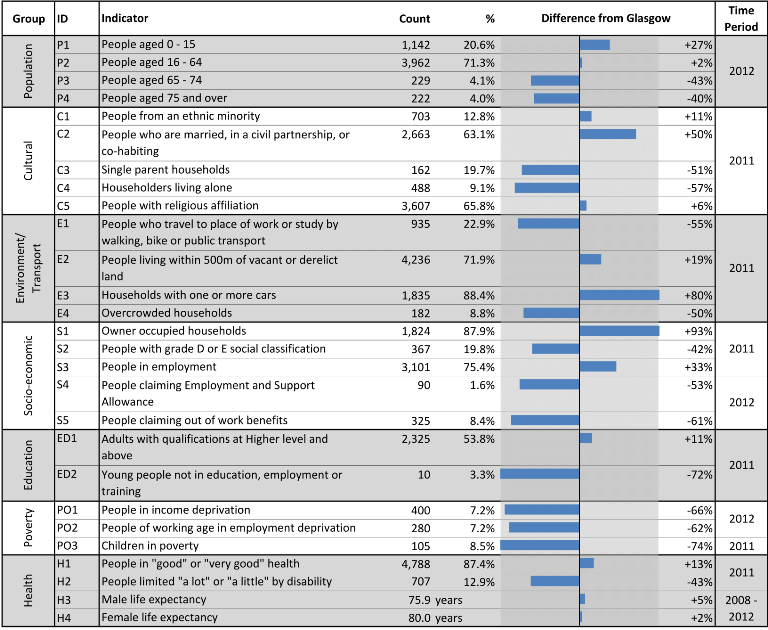Robroyston and Millerston
*Please note that this profile is based on data from the 2011 Census.*
A printer friendly version of this neighbourhood profile can be downloaded here.
Robroyston and Millerston is a neighbourhood in the north east of Glasgow with a population of 5,555.
Neighbourhood comparisons with Glasgow
Women in Robroyston and Millerston live, on average, over four years longer than men. Life expectancy is slightly higher than the Glasgow average. The area has a particularly high percentage of children and of people who are married, in a civil partnership or cohabiting. The neighbourhood has a high employment rate, 33% higher than the Glasgow average. Eighty-eight per cent of households have access to one or more cars and a similar proportion of households own their own home. The percentage of the neighbourhood living in income and employment deprivation is one of the lowest in Glasgow.
Neighbourhood trends
 Life expectancy for males has risen considerably in recent years in Robroyston and Millerston, from just below the Glasgow average to considerably higher than the average in the most recent years. Similarly, female life expectancy has risen to above the Glasgow average.
Life expectancy for males has risen considerably in recent years in Robroyston and Millerston, from just below the Glasgow average to considerably higher than the average in the most recent years. Similarly, female life expectancy has risen to above the Glasgow average.
 The population in Robroyston and Millerston increased by 174% between 1996 and 2012, due to considerable population increases across all age groups. The percentage of the total neighbourhood population from a minority ethnic group increased from 7% in 2001 to 13% in 2011, a figure which is slightly above the Glasgow average.
The population in Robroyston and Millerston increased by 174% between 1996 and 2012, due to considerable population increases across all age groups. The percentage of the total neighbourhood population from a minority ethnic group increased from 7% in 2001 to 13% in 2011, a figure which is slightly above the Glasgow average.
Notes
A document giving detailed notes and definitions for the information presented in this profile can be downloaded here.
An Excel workbook containing the data used in all of the profiles can be downloaded here. This workbook also includes alternative output formats and further breakdowns of some of the variables.
1. Data sources: Scottish Index of Multiple Deprivation (SIMD) 2012, Census 2011, Census 2001, HMRC, NOMIS, National Records of Scotland (NRS) and Scottish Government.
2. Populations presented in the population trend chart and used to calculate life expectancy estimates are taken from NRS small area population estimates and are based on: the 2001 Census for the years 1996-2001; both the 2001 and 2011 Census for the years 2002-2010; and the 2011 Census for the years 2011-2012.
3. The Income deprivation and Employment deprivation indicators are derived from SIMD 2012, more information on this deprivation index can be found at: http://simd.scotland.gov.uk/publication-2012
4. Life expectancies are calculated based on population estimates and death registrations. 95% confidence intervals have been added on the graphs to give an indication of their accuracy. The x-axes of the life expectancy graphs give the mid-year for each life expectancy estimate, e.g. 2010 represents the life expectancy estimate for the period 2008-2012.
Glasgow City Council have also produced neighbourhood profiles based on data from the 2011 Census 2011 which can be accessed via this link.

